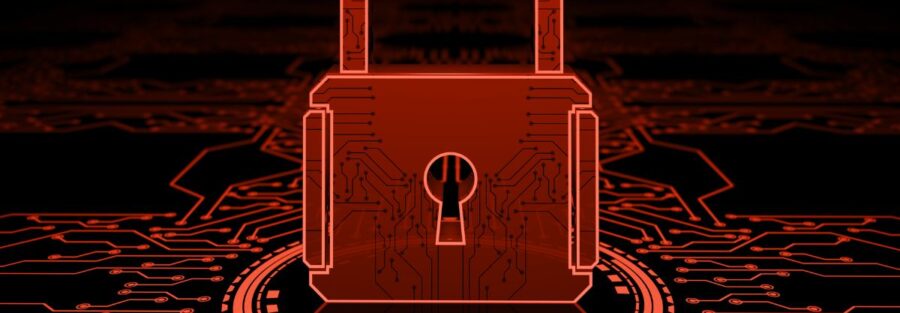A Guide for CISOs
In the ever-evolving landscape of cybersecurity, Chief Information Security Officers (CISOs) are tasked with staying ahead of increasingly sophisticated threats. To effectively defend their organizations, CISOs must understand and leverage key frameworks and models that provide insights into adversarial tactics, techniques, and procedures. Three critical models that have become indispensable tools in the cybersecurity arsenal are the Cyber Kill Chain, MITRE ATT&CK, and the Pyramid of Pain. In this blog post, we’ll explore these models in depth and discuss their significance for CISOs.
The Cyber Kill Chain
Developed by Lockheed Martin, the Cyber Kill Chain is a framework that outlines the stages of a cyberattack, from initial reconnaissance to data exfiltration. By understanding each stage, security teams can better detect, analyze, and respond to threats.
Stages of the Cyber Kill Chain
- Reconnaissance: The attacker gathers information about the target organization, such as network topology, employee details, and potential vulnerabilities.
- Weaponization: The attacker creates a deliverable payload, such as a malware-laden document or an exploit kit, to initiate the attack.
- Delivery: The payload is delivered to the target, typically via email, web downloads, or removable media.
- Exploitation: The payload exploits a vulnerability on the target system, executing the attacker’s code.
- Installation: The attacker installs malware on the compromised system to maintain persistent access.
- Command and Control (C2): The attacker establishes a command and control channel to remotely manipulate the compromised system.
- Actions on Objectives: The attacker performs their intended actions, such as data theft, system disruption, or lateral movement within the network.
Significance for CISOs
For CISOs, the Cyber Kill Chain provides a structured approach to understanding and mitigating cyber threats. By mapping security controls and detection mechanisms to each stage of the Kill Chain, CISOs can identify gaps in their defenses and prioritize investments in technologies and processes that disrupt the attack lifecycle. Additionally, the Kill Chain framework aids in incident response planning by providing a clear outline of potential attack progression, allowing teams to respond more effectively at each stage.
MITRE ATT&CK Framework
The MITRE ATT&CK (Adversarial Tactics, Techniques, and Common Knowledge) framework is a comprehensive matrix that categorizes and describes the various tactics and techniques used by adversaries during an attack. Unlike the linear progression of the Cyber Kill Chain, MITRE ATT&CK provides a more granular and detailed view of adversarial behavior.
Components of MITRE ATT&CK
- Tactics: The overarching goals or objectives of an adversary, such as initial access, persistence, or data exfiltration.
- Techniques: The specific methods adversaries use to achieve their tactics, such as phishing, credential dumping, or lateral movement.
- Procedures: The concrete implementations of techniques in specific attack scenarios, often detailing the tools and commands used by adversaries.
Significance for CISOs
MITRE ATT&CK is an invaluable resource for CISOs because it provides a detailed and constantly updated repository of adversarial tactics and techniques. This information allows CISOs to enhance their threat detection and response capabilities by mapping their security controls to the framework and identifying potential blind spots. Additionally, ATT&CK can be used to validate the effectiveness of security measures through threat simulation and red teaming exercises. By leveraging the ATT&CK framework, CISOs can develop a more robust and proactive security posture, better prepared to anticipate and counteract adversarial actions.
The Pyramid of Pain
The Pyramid of Pain, created by David J. Bianco, is a model that illustrates the impact of various types of threat indicators on adversaries. It categorizes indicators into six levels, each representing a different type of threat intelligence, from basic hashes to complex TTPs (Tactics, Techniques, and Procedures).
Levels of the Pyramid of Pain
- Hashes: Simple file hashes (e.g., MD5, SHA-1) that identify specific malicious files. Easy for adversaries to change.
- IP Addresses: Network addresses associated with malicious activity. Relatively easy for adversaries to change.
- Domain Names: Domains used by attackers for command and control or phishing. Adversaries can change but with more effort.
- Network/Host Artifacts: Specific artifacts such as registry keys or file paths. Harder for adversaries to modify without altering their tools.
- Tools: The specific tools used by adversaries, such as malware or exploitation frameworks. Even harder to change, as it requires retooling.
- TTPs: The adversary’s tactics, techniques, and procedures. The most challenging to change as it involves altering behavior and methodology.
Significance for CISOs
For CISOs, the Pyramid of Pain highlights the importance of targeting higher-level indicators to disrupt adversaries effectively. While blocking IP addresses or file hashes can provide short-term relief, focusing on TTPs can cause significant operational pain for attackers, forcing them to rethink their strategies and expend more resources. By prioritizing the detection and mitigation of TTPs, CISOs can implement more resilient and long-lasting security measures that enhance the organization’s overall defense capabilities.
Integrating the Cyber Kill Chain, MITRE ATT&CK, and the Pyramid of Pain
Each of these models offers unique insights and benefits for cybersecurity strategy. By integrating them, CISOs can develop a comprehensive approach to threat detection, response, and mitigation.
Building a Comprehensive Security Strategy
To build a comprehensive security strategy, CISOs should consider the following steps:
- Map Threats to the Cyber Kill Chain: Use the Cyber Kill Chain to understand the stages of potential attacks and map existing security controls to each stage. Identify gaps and prioritize improvements to disrupt the attack lifecycle.
- Leverage MITRE ATT&CK: Incorporate the MITRE ATT&CK framework into threat detection and response efforts. Use it to identify relevant tactics and techniques, enhance threat intelligence, and validate security controls through simulations and red teaming.
- Apply the Pyramid of Pain: Focus on higher-level indicators such as TTPs to create more effective and long-lasting defenses. Prioritize efforts that disrupt adversaries’ methodologies and force them to expend more resources.
- Continuous Improvement: Regularly update and refine your security strategy based on new intelligence, threat landscape changes, and lessons learned from incidents and exercises.
Case Study: Applying the Models in Practice
Consider a scenario where an organization faces a spear-phishing campaign targeting its employees. Here’s how the Cyber Kill Chain, MITRE ATT&CK, and the Pyramid of Pain can be integrated to address the threat:
Using the Cyber Kill Chain
The organization identifies the spear-phishing emails during the Delivery stage. By recognizing this stage, the incident response team can take immediate action to prevent further exploitation.
Leveraging MITRE ATT&CK
The team uses the ATT&CK framework to identify the techniques used in the spear-phishing campaign, such as Phishing (T1566) and User Execution (T1204). This helps them understand the adversary’s methods and enhance their email filtering and user training programs.
Applying the Pyramid of Pain
Instead of focusing solely on blocking the specific phishing emails (lower-level indicators), the team prioritizes identifying and mitigating the adversary’s TTPs. They enhance their detection capabilities to identify similar spear-phishing tactics across different campaigns, causing significant disruption to the adversary’s operations.
Understanding and leveraging the Cyber Kill Chain, MITRE ATT&CK, and the Pyramid of Pain are essential for CISOs aiming to build a robust cybersecurity strategy. Each model provides unique insights into adversarial behavior and threat detection, allowing CISOs to develop comprehensive and proactive defense mechanisms. By integrating these frameworks, CISOs can enhance their organization’s resilience, effectively disrupt adversaries, and stay ahead in the constantly evolving landscape of cybersecurity.



